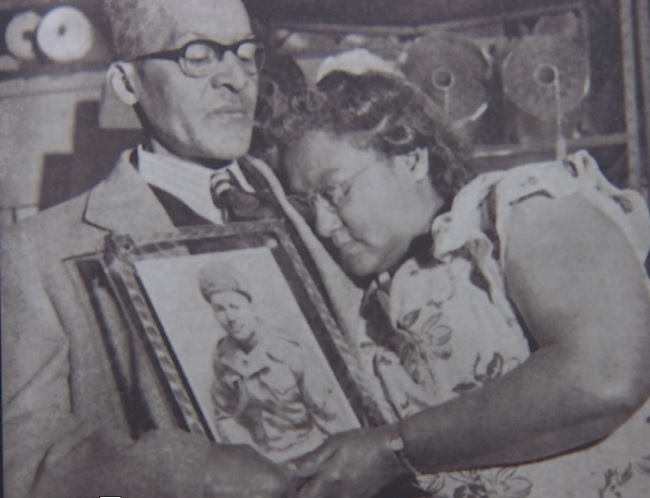The Hidden History of African-American Gold Star families
WASHINGTON (Nexstar) — Many people are familiar with the term “Gold Star Mothers.” It recognizes the family of fallen service members. The National Museum of African-American History and Culture (NMAACH) is working to preserve the stories of some families who paid the ultimate sacrifice.
The NMAACH tells America’s story through the eyes of African-Americans like Medal of Honor recipient Cornelius Charlton. Charlton died serving our country and his medal is now part of the museum’s military exhibit, along with a photo of his parents who joined the distinct group known as “Gold Star” families. Curator Krewasky Salter says the organization started as a way to recognize mourning families.
“Born out of World War I by mothers who had lost sons during the war,” Salter said. “Actually born out of a desire to have something perhaps tangible to their loss.”
World War I was one of the deadliest conflicts in U.S. history and the bodies of many United States soldiers never returned home
“In death they were not repatriated, most of them,” said Salter. “Their bodies were buried in France.”
To help console loved ones, in the early 1930’s, the federal government sponsored trips for Gold Star families to visit the graveyards abroad. But that program came with controversy caused by racial segregation.
“The black press, the NAACP and some of the mothers decided to boycott the pilgrimages,” said Salter. “They felt their sons fought for democracy and equality and yet 11 years later when they went on these pilgrimages, the pilgrimages were going to be segregated.”
While some objected, more than 160 African-American mothers did go overseas to honor fallen soldiers.
At the time segregation was the norm in society and in the military. Then in 1948 President Harry Truman signed an executive order integrating U.S. Armed Forces. While the process of integration was gradual on the battlefield, military officials said it was immediate in the cemeteries. Several African-American soldiers from World War I are buried in Arlington National Cemetery among fellow soldiers.
Salter said equality and inclusion are important parts of the Gold Star exhibit, which also honors 2nd Lt. Emily Perez and her family. Perez, who was African-American and Hispanic, graduated West Point as the highest-ranking minority woman in school history.
“Emily Perez was a 2005 graduate of the Military Academy at West Point,” Salter said. “That class was known as the 9/11 class because they entered in the summer of 2001.”
Perez became the first combat death from her graduating class and the first female West Point graduate to be killed in Iraq.
“She was killed by an IED, improvised explosive device, while leading a convoy. We use this story so people will know that today men and women are dying in combat, which is one of the reasons we want to make sure the gallery is inclusive.”
Perez’s parents donated her West Point Sabre and other artifacts to the museum as a way to preserve history. Salter said it’s important to recognize not only all the men and women who make the ultimate sacrifice but the families they leave behind.
